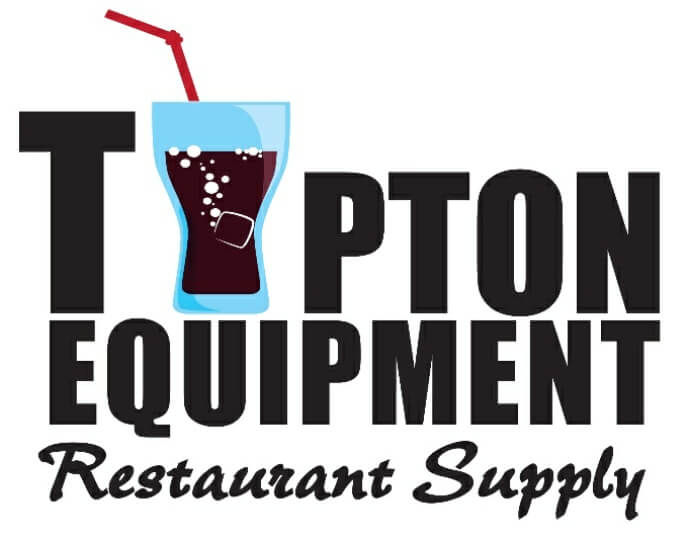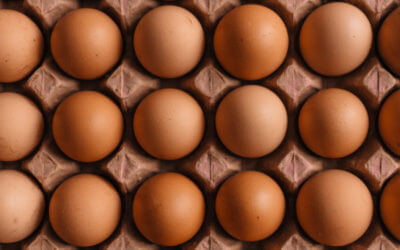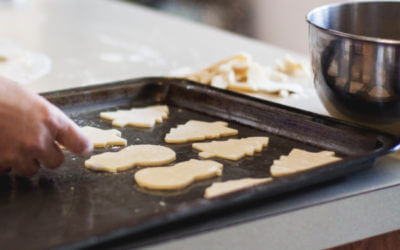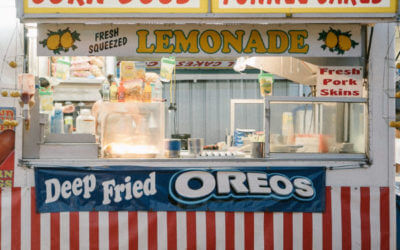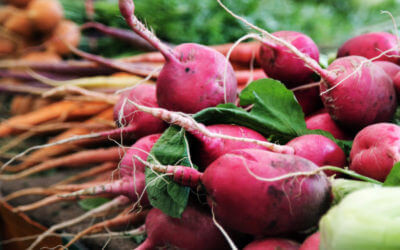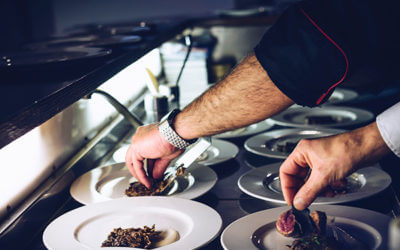Pulping and Grinding: A Starter’s Guide to Reducing Commercial Food Waste Costs
February 13, 2018For most restaurant owners and managers, the expenses involved in making meals are always under careful consideration.
Water is needed to prepare, cook and wash food; power is necessary for food prep, cooking and cooling, and so on. However, how many of us consider the costs involved in dealing with the food that we don’t use – the food that finally ends up as waste?If you dispose of your food waste in the trash, you will have to pay tipping fees on all that weight. In addition, you have the potential issues of trash odors and pests. When you add labor expenses on top of all that, throwing food waste in the trash isn’t cheap. Despair not. There are several types of kitchen equipment available to help reduce the size of this problem. The easiest way to decrease your food waste is to grind it and press as much water out of it as possible, using a type of mechanical kitchen equipment known as a pulping system.
Shrink your Food Waste with Pulping Systems
Pulping systems with dewatering presses decrease food volume by as much as eighty five percent. Although the leftover waste can be thrown away, a pulping system is a particularly good kitchen equipment choice if organic waste recycling is offered in your region. With pulping kitchen equipment, your disposal charges will decline substantially, seeing that your waste hauler will collect only fifteen percent of the amount of food waste you used to produce. And this can be reused as compost!
When it comes to buying your kitchen equipment, traditional pulping systems can range from $35,000 to $150,000 or more. However, multiple producers now create food grinding and dewatering systems on a smaller scale. Such systems contain a large disposer, coupled with an under-counter dewatering press, making them appropriate kitchen equipment even for mid-sized restaurants.
Upgrade your Food Wast Process with Slow Speed Grinders
For an even more efficient solution, slow speed grinders (SSGs) are a type of kitchen equipment that lessens waste more successfully and quietly than pulping systems. While pulping systems do reduce solid waste substantially using recycled water, you may lessen the noise in your commercial kitchen if you use a slow speed grinder. Another advantage is that SSGs are a less complicated kind of kitchen equipment to clean and maintain.
Slow speed grinders use existing, proven technology in grinding and applies it as follows:
Reduced Noise and Vibrations
SSG kitchen equipment significantly reduces noise and vibrations, because you’re using a grinding mechanism instead of a regular rotating plate. As opposed to the typical, loud disposer noises, slow speed grinders produce what could be described as a low hum.
Effective Water Extraction
the SSG makes use of a centrifuge process, with a spinning screw and screen in place of a conventional dewatering screw press. Working like a wringer washer to extract water, this feature of the slow speed grinder variety of kitchen equipment drastically improves the effectiveness of the water extraction process. The result is a dryer, lighter-weight end-product that is cheaper to dispose of.
Water Savings
Current pulper technologies pump in freshwater and then recycle it as a slurry. SSG kitchen equipment takes water saving a step further through the use of water from the dishwasher and conveyor. Used water within the dishwasher pre-rinse tank can be piped over to be used in your new piece of kitchen equipment, the slow speed grinder.
Integration with Dehydrator
As soon as your slow speed grinder has decreased your waste, it can be conveyed over to the dehydrator, where the food waste can be brought down between a ninety and ninety five percent dry state.
Preventing Dine and Dash in Your Little Rock Restaurant
There’s nothing more frustrating to a server – and a manager – than realizing that a table has left without paying for their meal. It costs everyone money, and it can be insulting as well. Sometimes dine and dashers are young people who think it’s a funny prank. Other...
Renovations: Keeping Your Restaurant Supplies & Costs in Check
Every restaurant owner has to face the reality of renovations at some point. Usually, this is good news – your restaurant is growing, or is successful enough that you can expand. Sometimes it’s just a matter of keeping up with the times, replacing old and damaged...
Build Up Your Employees with Fun Perks
Your employees do a lot for you. You depend on them to follow protocols, serve customers with kindness, and keep your commercial kitchen in top shape. Of course, you provide them with a great working environment. But why not thank them in additional ways – with fun...
Commercial Kitchen Fun: Almost a Dozen Ways to Cook Eggs
Cooking an egg might be one of the most basic kitchen skills around, but that doesn’t mean there’s only one way to do it. If you serve breakfast, you’re probably familiar with quite a few of them. But almost a dozen? That’s worthy of its own egg-only menu! Don’t...
Restaurant Equipment Spotlight: Using Tech to Promote Your Restaurant
You’ve got a great location. Your restaurant equipment is in great shape, and you have excellent employees ready to serve. Your menu is on point, and you’re ready to bring a top-level dining experience to your community. So… where are the customers? Having an...
Holiday Marketing for Your Restaurant
It’s never too early to think about how you plan to market your restaurant for the holidays. Your strategy will vary a lot depending on what type of establishment you have. The restaurant supplies you’ll need will also depend on the type of marketing campaign you...
Things to Instagram About Your Restaurant
A picture is still worth 1,000 words, especially when it comes to marketing. While customers taking endless pictures of their food to post online may frustrate your staff, the truth is it gets the word out about your restaurant. However, you don’t have to rely on your...
Choosing the Right Refrigerator for Your Commercial Kitchen
People who buy refrigerators for their homes often spend weeks researching different models and finding exactly what they need. It’s a major investment for many homes, and it pays to get it right! In your commercial kitchen, you may feel that you don’t have that kind...
Tips for Managing Restaurant Inventory
Does the thought of keeping track of every ingredient and piece of kitchen equipment in your restaurant make you want to hide your head under a pillow? You’re not alone. Keeping track of everything is time-consuming and often overwhelming. And you know how much your...
Restaurant Supplies: Getting Started With a Food Truck
While restaurants grow slowly, the food truck industry has been rocketing with 7.3% growth between 2012 – 2017. Food trucks are great for entrepreneurs because they have a relatively low startup cost and annual overhead compared to other businesses. Customers who...
Commercial Kitchen Fun: Restaurant Bloopers
Making mistakes is part of being human. However, sometimes these mistakes are pretty funny and deserve to be shared with others. There are many things that may not have been funny at the time, but in retrospect give you a smile and reason to be more gentle with...
Kitchen Equipment Spotlight: What You Need for Concession Stands
Tis the season for high school football and other fall festivals. Are you in charge of stocking concessions for your local team’s games? Or are you considering opening a concession stand at a local sporting venue, outdoor event, or pool? If you want to provide...
Kitchen Supplies: Should You Go Local With Ingredients?
If you own a restaurant in Little Rock, you’ve certainly heard of the trend toward going local. Local kitchen supplies, local ingredients, even local art as décor. There are a lot of great reasons to buy local – your money will stay in and support your community, for...
Commercial Kitchen Fun: Why Salty & Sweet?
All cooks who consider making desserts know that salty and sweet is a winning combination. Salted caramel shows up in hundreds of recipes. Candy bars combine salted nuts with chocolate. We dip French fries in ice cream. We put pineapple on pizza. People even put salt...
Restaurant Equipment Spotlight: Ensuring Safety in Your Restaurant
A lot happens in your restaurant every day. You have people coming and going all the time. Your employees are constantly moving around, and customers are entering and leaving throughout the day. Unfortunately, with all that activity, there’s also a lot that can go...
